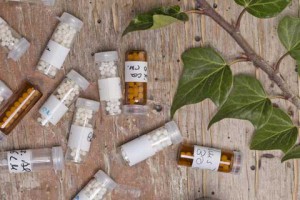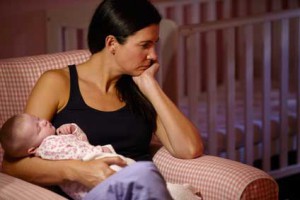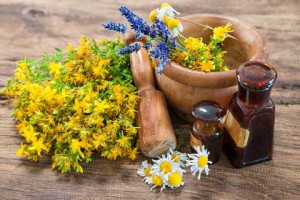(Source: Society of Homeopaths, www.homeopathy-soh.org)
 Randomised controlled trials By the end of 2009, 142 RCTs comparing homeopathy with placebo or conventional treatment had been published in peer-reviewed journals. In terms of statistically significant results, 74 of these trials were able to draw firm conclusions: 63 were positive for homeopathy and eleven were negative.1
Randomised controlled trials By the end of 2009, 142 RCTs comparing homeopathy with placebo or conventional treatment had been published in peer-reviewed journals. In terms of statistically significant results, 74 of these trials were able to draw firm conclusions: 63 were positive for homeopathy and eleven were negative.1
Detractors of homeopathy continue to suggest that any beneficial effects of homeopathy are due to placebo alone. Over a period of 18 years Dr Reilly’s team at Glasgow University conducted four double blind placebo controlled trials, specifically designed to examine the evidence for this placebo hypothesis. All four trials, involving a total of 252 patients, produced similar positive results, demonstrating that homeopathy has an effect greater than placebo and that these results are reproducible.2 As the trial design used is the same as that used to test conventional treatments, Reilly states that there are only two possible conclusions from these results – “either homeopathy works or the trial generates false positive results and is therefore not a useful tool for assessing any treatment – whether orthodox or homeopathic.”3
Evidence for specific conditions
Systematic reviews analysing results from several RCTs that investigated the homeopathic treatment of a given medical condition have reported positive conclusions in the following areas1: allergies and upper respiratory tract infections,4 childhood diarrhoea,5 influenza,6 postoperative ileus,7 rheumatic diseases,8 seasonal allergic rhinitis9, 2, 10 and vertigo.11
One of the above reviews included three double-blind clinical trials of diarrhoea in a total of 242 children aged 6 months to 5 years; the data from the three trials were analysed together.6 The results of this meta-analysis showed that the duration of acute childhood diarrhoea was reduced by individualised homeopathic treatment more than by placebo treatment, and that the results were highly significant (P=0.008).
Homeopathy in practice
A service evaluation at the Bristol Homeopathic Hospital recorded the outcome of homeopathic treatment in over 6,500 consecutive patients. In this study, carried out over a six-year period, 70% of patients reported an improvement in their health.12 The best clinical results were seen in the treatment of children with eczema and asthma, and adults with inflammatory bowel disease, irritable bowel syndrome, menopausal problems and migraine. Other conditions which improved after homeopathic treatment included arthritis, depression and chronic fatigue syndrome.
A German study involving 493 patients seen in general practice found that treatment by a homeopath gave better outcomes than conventional treatment for similar costs.13 This study was commissioned by a German health insurance company to see whether they should continue to cover homeopathic treatment. The outcomes and costs of homeopathic and conventional treatment were compared in patients being treated for chronic conditions including headache, low back pain, depression, insomnia and sinusitis in adults, and atopic dermatitis, allergic rhinitis and asthma in children.
In the laboratory
75% of in vitro experiments have found that substances as dilute as homeopathic medicines have specific effects.14 For example, homeopathically-prepared thyroxine can slow down metamorphosis of tadpoles into frogs.15 These results were replicated by five separate laboratories in Austria and confirmed by the results of similar experiments carried out by an independent team in Brazil.16 The homeopathic thyroxine used was so highly diluted that you would not expect any molecules to be present.
Further information
It is frequently said that there is ‘no scientific evidence’ for homeopathy. Such a statement is incorrect for it ignores the positive research findings as outlined above. The homeopathic community welcomes more high quality research, however, to build on the existing evidence base.
For more information about homeopathy research please visit the Society of Homeopaths website at www.homeopathy-soh.org
References:
1. British Homeopathic Association. The Research Evidence Base for Homeopathy. www.britishhomeopathic.org/export/sites/bha_site/research/evidencesummary.pdf [accessed, Dec 2010]
2. Taylor MA, Reilly D, Llewellyn-Jones RH, et al. Randomised controlled trials of homoeopathy versus placebo in perennial allergic rhinitis with overview of four trial series. Br Med J 2000; 321: 471–6
3. Reilly D. Reilly D. The Evidence For Homoeopathy, published by Adhom, Glasgow. http://www.adhom.com/adh_download/EVIDENCE_9.0_Sept_06.pdf
4. Bornhöft G, Wolf U, Ammon K, et al. Effectiveness, safety and cost-effectiveness of homeopathy in general practice – summarized health technology assessment. Forsch Komplementärmed 2006; 13 Suppl 2: 19–29
5. Jacobs J, Jonas WB, Jimenez-Perez M, Crothers D. Homeopathy for childhood diarrhea: combined results and metaanalysis from three randomized, controlled clinical trials. Pediatr Infect Dis J 2003; 22: 229–34
6. Vickers A, Smith C. Homoeopathic Oscillococcinum for preventing and treating influenza and influenza like syndromes (Cochrane Review). In: The Cochrane Library. Chichester, UK: John Wiley & Sons, Ltd. 2006; CD001957
7. Barnes J, Resch K-L, Ernst E. Homeopathy for postoperative ileus? A meta-analysis. J Clin Gastroenterol 1997; 25: 628–33
8. Jonas WB, Linde K, Ramirez G. Homeopathy and rheumatic disease – Complementary and alternative therapies for rheumatic diseases II. Rheum Dis Clin North Am 2000; 26: 117–23
9. Wiesenauer M, Lüdtke R. A meta-analysis of the homeopathic treatment of pollinosis with Galphimia glauca. Forsch Komplementärmed Klass Naturheilkd 1996; 3: 230–6
10. Bellavite P, Ortolani R, Pontarollo F, et al. Immunology and homeopathy. 4. Clinical studies – Part 2. eCAM 2006;3: 397–409
11. Schneider B, Klein P, Weiser M. Treatment of vertigo with a homeopathic complex remedy compared with usual treatments: a meta-analysis of clinical trials. Arzneimittelforschung 2005; 55: 23–9
12. Jacobs J, Jonas WB, Jimenez-Perez M, et al. Homeopathy for childhood diarrhea: combined results and metaanalysis from three randomized, controlled clinical trials. Pediatr Infect Dis J 2003; 22: 229–34
13. Spence D, Thompson E, Barron S. Homeopathic treatment for chronic disease: A 6-Year, university-hospital outpatient observational study. J Altern Complement Med 2005; 5:793-8.
14. Witt C, Keil T, Selim D, et al. Outcome and costs of homeopathic and conventional treatment strategies: a comparative cohort study in patients with chronic disorders. Complement Ther Med, 2005; 13: 79-86
15. Witt CM, Bluth M, Albrecht H, et al. The in vitro evidence for an effect of high homeopathic potencies – a systematic review of the literature. Complement Ther Med, 2007; 15: 128–138
16. Endler PC, Heckmann C, Lauppert E, et al. The metamorphosis of amphibians and information of thyroxine. In: Schulte J, Endler PC (eds). Fundamental Research in Ultra High Dilution and Homoeopathy. Dordrecht: Kluwer Academic Publishers, 1998
17. Guedes JR, Ferreira CM, Guimaraes HM et al. Homeopathically prepared dilution of Rana catesbeiana thyroid glands modifies its rate of metamorphosis. Homeopathy, 2004; 93:132–7
 Louis is a 2 weeks old first baby. His mum Maggie brings him for his first osteopathic treatment after consulting with her doula. Louis has had problems breastfeeding since birth. It takes Maggie up to 1- 1.5 hrs to feed him. Maggie gets very tired and anxious and Louis gets frustrated, so Maggie expresses her milk and reluctantly bottle-feeds him.
Louis is a 2 weeks old first baby. His mum Maggie brings him for his first osteopathic treatment after consulting with her doula. Louis has had problems breastfeeding since birth. It takes Maggie up to 1- 1.5 hrs to feed him. Maggie gets very tired and anxious and Louis gets frustrated, so Maggie expresses her milk and reluctantly bottle-feeds him.
 Below is a letter written by a woman who used to suffer from post-natal depression. The client, whose name will not be revealed for reasons of confidentiality, was eager for us to publish the account of her experiences in the hope that it would encourage other women in that situation to find the right help. She was treated by hypnotherapist Lionel Sinclair DABCH, MCA Hyp, who has been practising at the Brackenbury Clinic since 2005.
Below is a letter written by a woman who used to suffer from post-natal depression. The client, whose name will not be revealed for reasons of confidentiality, was eager for us to publish the account of her experiences in the hope that it would encourage other women in that situation to find the right help. She was treated by hypnotherapist Lionel Sinclair DABCH, MCA Hyp, who has been practising at the Brackenbury Clinic since 2005. Randomised controlled trials By the end of 2009, 142 RCTs comparing
Randomised controlled trials By the end of 2009, 142 RCTs comparing 